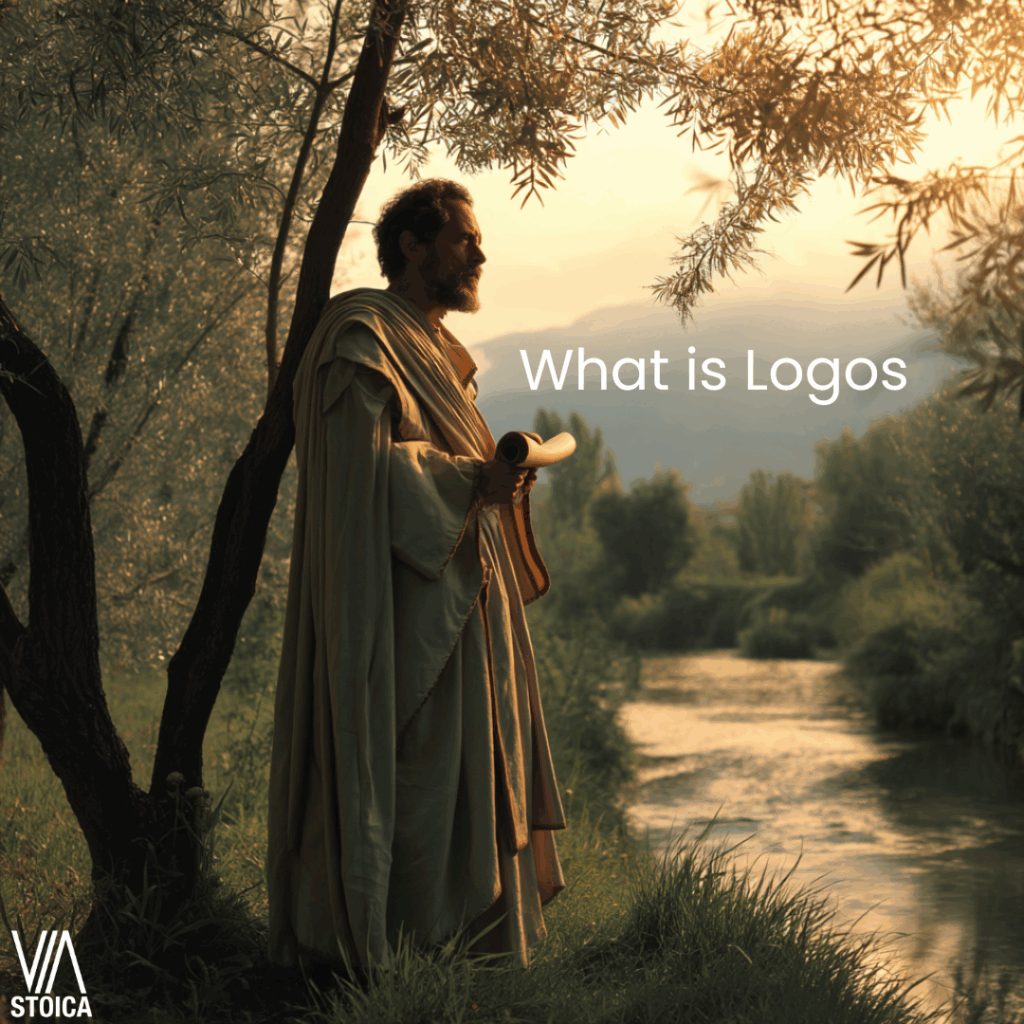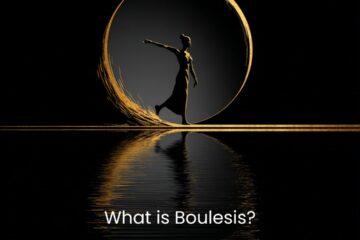What Is Logos in Stoicism?

Logos is one of the most foundational ideas in Stoic philosophy and also one of the most misunderstood. Often translated as “reason” or “rational principle,” Logos in Stoicism goes far beyond just logic or clear thinking.
For the Stoics, Logos is the intelligent order behind the universe. It’s the principle that governs nature, reason, and human behavior when aligned with virtue. To live according to Logos is to live in harmony with the very structure of reality. If that sounds abstract, don’t worry, this post will unpack the meaning, explain why it matters, and show how you can practice Logos today.
The Greek Origins of Logos
The word Logos (λόγος) in ancient Greek means:
- Word
- Reason
- Discourse
- Account
- Principle
In Stoic thought, it took on a deeper meaning: the divine rationality embedded in nature itself. The Stoics believed the cosmos is not chaotic or random, but ordered by a rational principle, Logos. And since humans possess a spark of this divine rationality, we are capable of understanding nature, living wisely, and acting virtuously.
Learn more about other Stoic Philosophy terms here.
Furthermore, in Stoicism, everything is linked through cause and effect. The Stoics were deterministic, and Logos is what underlies this entire chain. We possess a sliver of free will in how we respond, whether we accept what happens or resist it. But ultimately, all events are part of an eternal, interconnected sequence, governed by Logos.
To live in accordance with Logos is to live in accordance with reason and nature, two of the Stoic path’s most important guideposts.
The 3 Dimensions of Logos in Stoicism
1. Logos as Cosmic Reason
The universe operates according to rational laws. Logos is the structure and intelligence behind all natural processes. The Stoics called this a divine ordering, which makes the world make sense.
2. Logos as Human Reason
Humans share in this cosmic Logos through our capacity for reason. This means we are not just passive observers, but active participants in the rational unfolding of life.
3. Logos as Ethical Living
When we align our thoughts and actions with reason, we’re aligning ourselves with the universe. That’s how we live virtuously. Stoic ethics is essentially applied Logos.
How Logos Connects to Core Stoic Principles
- Virtue (ἀρετή): Virtue is the result of living in accordance with Logos, choosing reason over impulse, order over chaos.
- Reason (λόγος): Logos is reason. It’s what makes us capable of understanding ourselves, others, and the natural world.
- Nature (φύσις): To live “according to nature” means living according to Logos, which underlies and organizes all natural things.
- Wisdom (σοφία): Wisdom is the practical application of Logos in daily life, right judgment, disciplined thought, and moral clarity.
- Community (κοινωνία): Since all humans share in Logos, we are part of a universal human family. Stoic cosmopolitanism begins here.
Logos vs Modern Misunderstandings
Logos ≠ Just Logic
Modern interpretations often reduce Logos to formal logic or cold rationality. But Stoic Logos is far more holistic, it’s reason embedded in the fabric of reality. It’s also moral, natural, and even spiritual in its depth.
Logos ≠ Religion
While the Stoics sometimes used theological language, Logos is not a personal deity. It’s not about worship. It’s about alignment with reason, with nature, and with virtue.
Why Logos Is Central to Stoic Practice
You can’t be Stoic without Logos. It’s the compass that helps you:
- Make wise choices
- Resist impulsive emotion
- Understand your role in nature
- Develop virtue through rational self-governance
Marcus Aurelius often reminded himself:
“My only fear is doing something contrary to human nature—the wrong thing, the wrong way, or at the wrong time.”
Marcus Aurelius, Meditations, Book 7.20
This reflects the Stoic idea that we are meant to live in harmony with Logos—by acting in line with our rational nature, not against it.
And Epictetus adds:
“To a rational creature, only what is contrary to reason is unendurable: but everything rational he can endure.”
Epictetus, Discourses, Book 1, Chapter 2.1
This reinforces the Stoic view that our true suffering comes not from events themselves, but from violating reason. When we align with Logos, we can endure anything.
How to Practice Logos Today
- Daily Reflection with Reason:
At the end of the day, ask yourself: Were my actions guided by reason or impulse? Journaling helps bring clarity. - Morning Intention Setting:
Begin the day with this Stoic mantra: Let me act today in accordance with reason and nature. - Pause Before Reacting:
When emotion surges, stop and ask: What would Logos have me do? This simple pause brings you back into alignment. - Seek Order, Not Control:
Instead of controlling outcomes, focus on acting rationally in the face of uncertainty. That’s Stoic surrender, not passivity, but active alignment.
FAQ
What does Logos mean in Stoicism?
It means the rational principle governing both the universe and human thought. It’s the foundation of Stoic ethics and practice.
Is Logos religious?
No, not in a modern religious sense. It’s a philosophical concept, rational, not theistic.
Can anyone live according to Logos?
Yes. Every rational being has the capacity. It takes practice, clarity, and the pursuit of virtue.
Conclusion: Logos Is the Stoic Path
Logos isn’t just an idea. It’s the thread that runs through Stoic cosmology, ethics, and daily life. To live according to Logos is to live in alignment with your nature as a rational being, connected to a rational universe. It’s not something you master overnight, but it is something you can begin to practice right now.
Call to Action
Today, pause before you act. Ask yourself: Am I following impulse or Logos?
That small shift, from reaction to reason, is a Stoic act.
🔗 Want to explore more Stoic strategies? Start with our Complete Guide to Stoic Greek Terms, read more on Marcus Aurelius quotes, or book a free consultation with a certified Stoic coach. You can also listen to the Via Stoica podcast on Spotify or Apple Podcasts or watch it on YouTube.



0 Comments